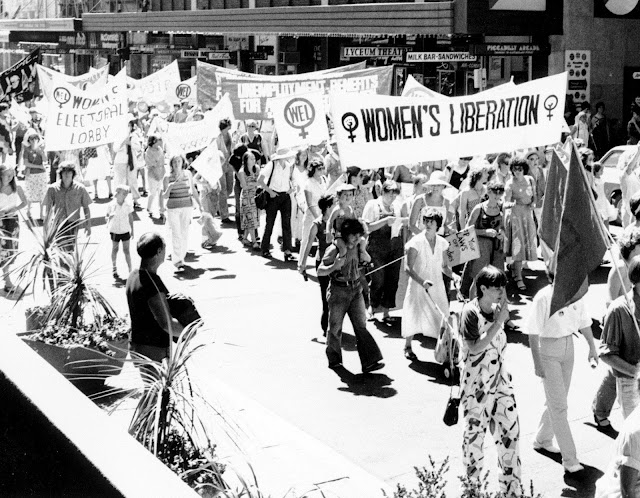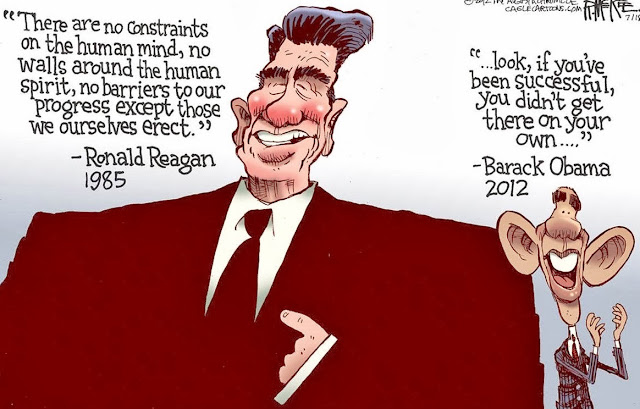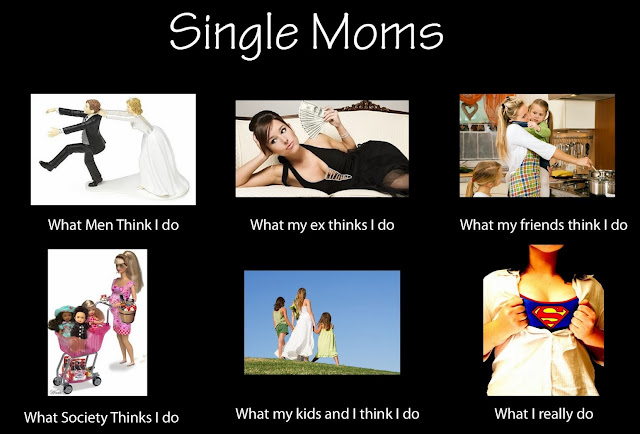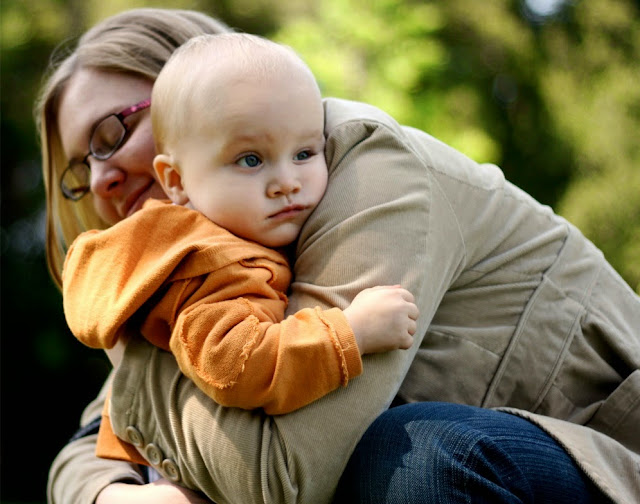The Gender Gap Essay By Teresita Blanco
The Gender Gap Essay By Teresita Blanco The term gender gap originated with the feminist movement of the 1920s. Accord...
https://phistars.blogspot.com/2013/10/the-gender-gap-essay-by-teresita-blanco.html
The Gender Gap Essay By Teresita Blanco
The term gender gap originated with the feminist movement
of the 1920s. According to early suffragists, women had different experiences
than that of men. They argued that man and women would see certain events
differently. They used that argument to support woman’s right to vote. At the
time, women and men served different roles in society. Men belonged to the public
sphere and women in the private sphere. It was argued that the women would vote
differently than man on certain issues because of their gender (Carroll, Pg
77). When woman finally earned the right to vote, the voting patterns of men
and woman remained more or less identical.
Changes did not occur because women were still tied to their husbands,
due to financial and cultural reasons.
The
true gender gap only surfaced in the 1980s. By that time, women had become
psychologically and financially independent from men. As such, they started
using their voting power to address issues that were important to them (Caroll,
Pg 78). In essence, gender gap is described as the difference between man and
woman voters’ support for certain laws, candidates and issues (Clark Article,
Pg 54). This gender gap greatly influences men and women support certain
issues. It explains why more women vote Democrat than men or why more men
support military spending.
Susan J. Carroll has four explanations for the origin of
this gender gap. The first reason has to do with women’s increased independence
(Caroll, Pg 78). Over the years, there have been higher divorce rates. Women
still tend to live longer then man. These two factors combined have made women
the main bread winners of their families. This independence has helped them
view things differently than men. Today, women are more independent thanks to
education. More and more women keep seeking higher degree education at the
university. With education, their perspective broadens. They no longer follow
blindly whatever men claims.
This gender gap reason is visible in women’s Democratic
tendencies. According to Clark, the increase in divorce rate has created a
feminization of poverty (Clark, Pg 59).As it happens, due to divorces and
longer life spans, women end up as the sole bread winner for a family. This
causes many women to live near the poverty line. As such, they tend to support
well fare programs because their livelihood depends on them (Clark, Pg 59).Thus,
their newly found independence has made women more likely to vote Democrats and
the well fare programs that the Party supports.
The second reason for the gender gap has been attributed
to the feminist movement. The feminist movement has done much to enlighten
women on their political powers (Clark Article, pg 53). Many scholar blame the
gender gap on the feminist movement. The movement created a political agenda
that solely benefited women (Clark, pg 53). Its ultimate aim was to increase
gender consciousness among women in order to help women become independent of men.
The feminist group was so vehement in their claims that many women subscribed
the feminist agenda. In essence, the feminist political agenda is partly
responsible for the gender gap.
The influences of the feminist agenda were visible in policies
that woman support. According to Clark, women who identified themselves as
feminist were more likely to support Gay Rights (Clark, Pg 59). They were also
more likely to support a Democratic Candidate. This was well noted in the Bill Clinton
Elections. In his second term, the gender gap showed that 11% more women than
men supported the Democratic incumbent (Carroll, pg 80). Since Democrats had a
liberal agenda, women tended to vote Democrat.
The third reason for the gender gap has much to do with
Ronald Reagan. Up until his election, the Democrat and Republican parties ideologies
were not clearly defined (Caroll,pg 79).
Reagan was the first Republican President to run with a clear,
Conservative Republican agenda. Before he came along, you had the Conservative
Democrats or the Liberal Republicans. Reagan’s election shifted the agenda in
such a way that made the Democrats Liberal and the Republicans Conservatives. When
the parties obtained clear cut differences the gender gap became apparent
(Caroll, pg 79). This was well noted in both the Reagan elections. In the first
elections, 54 % of men voted for Reagan. In his reelection, Reagan received 64%
of male voters. In both instances the gender gap, ranged between 6 and 8% of
more male voters supporting the Republican Party.
Lastly, the gender gap was created because of changes in male
voting patterns. Before the 1970s, men divided their votes evenly among the
Democratic and Republican Party (Carroll, pg 81). Early on, women showed a
preference for the Democratic Party. After the 1980s, men’s attitude changed.
Men started showing a preference for the Republican Party. Women’s party
identification did not change much over the years (Carroll, Pg 82). Even in
2005, Women still prefer the Democratic Party.
According
to Clark, the gender gap among voters who support the Democrats had increased.
The gap ranges between 3% and 11% of men did not vote for a Democratic
candidate (Clark, Pg 51). The gap was most visible in the reelections of the
Republican Presidents George. In the Bush reelections, 55% of men voted for
Bush (Carroll, Pg 79). Men’s Republican tendencies were also noted on the
issues that men support. Generally, men want less government intervention, less
well fare spending and more tax cuts (Clark, Pg 59). These ideologies are
represented by the Republican Party. Overall, changes in men’s attitudes have
made them more likely to vote for a Republican Candidate.
The Clark article also adds two other reasons for the
gender Gap. According to Clark, the gender gap was created because women are
more compassionate than men (Clark, Pg 53). According to Caroll Gilligan, women
see the world based on their psychology. They focus more on community and
connecting with others on a personal level. As for men, they tend to see the
world in a more abstract light. For them, everything is about competition and
confrontation. Women, on the other hand, prefer to cooperate with others.
Unlike men, they are willing to make compromises for the sake of the entire
group (Clark, Pg 54).
The effect of women’s compassion is noted in their
support for social well fare programs. As such, women tend to think that
government should do more. On a more personal level, women tend to support government
programs that promote education and child care (Clark, pg 59). Since Democrats Party
is the party that supports government involvement, the compassion element makes
women vote Democrat.
The second reason has to do with women’s conflict
aversion tendencies. Since they have to take care of the children, women tend
to avoid conflict (Clark, Pg 54). According to Table 3.6, most women tend to
despise defense spending. The gender gap among these voters for defense
spending was of 6%. The gender gap is even more visible among the democratic
woman. About 73% of Democratic woman did not want more military spending (Clark,
Pg 60). This gap became more visible with more than 8% of women not desiring
more military spending.
These
trends vary depending on the international situations. Post 9/11, the gender
gap on matters of military spending narrowed quite a bit (Clark, Pg 61). In
2002, 4% more women wanted the government to fight terrorism. As the war
progressed, women’s attitude changed. The gender gap shifted to having 13% of
women against Terrorism spending (Clark, pg 60). This goes to show that women
do not put up with war for very long. At most, they will support war spending
at the start of the conflict.However, when the bodies start piling up, women
become conflict resolution oriented (Clark, Pg 54). In the end, the situation
dictates how women will react to a conflict. If they feel themselves and their
family threatened women are more likely than men to support military spending.
However, if women feel that the conflict feels is far away from U.S. soil,
women tend to not to support military spending.
All these factors combined explain the origin and the
effects of the gender gap in politics. There are fundamental differences among
men and women. While these differences persist, the gender gap will remain. That
gender gap will only become more apparent as more women enter political office
(Clark, Pg 52). Women tend to gage things on how it will affect their family
members. Men view issues on a more self-centered level.Another key issue is the
Republican Party. That tends to attach more male voters. For the U.S. society
to become more egalitarian, the Republican Party needs to change, in a way that
allows for more women participation. There is a need for there to be both men
and woman in both political parties. Women have a different opinion than men,
which must be addressed. While their voices remain
silence, the U.S. will not have true gender equality.
Bibliography
Susan J. Carroll,
Richard Logan Fox. Gender and elections : shaping the future of American
politics, Cambridge ; New York : Cambridge University Press, 2006
Luis Duke Whitake. Voting
the Gender GapThe Board of Trustees of the University of Illinois. 2008.
Clark Article








